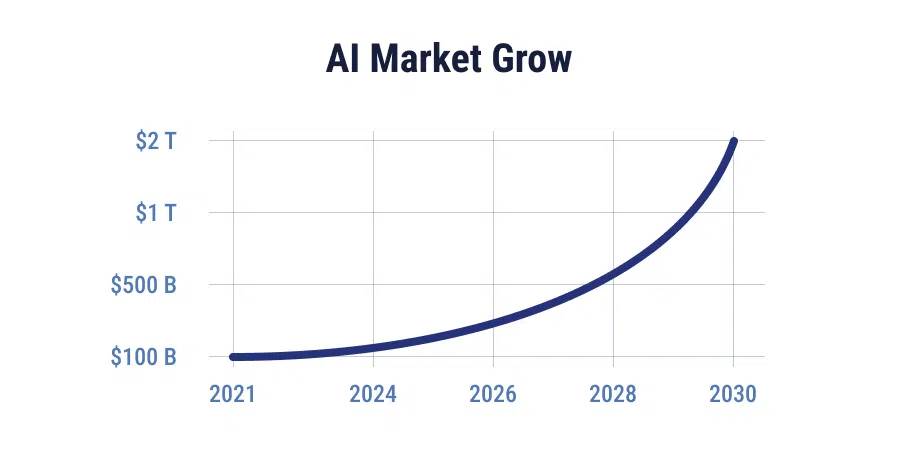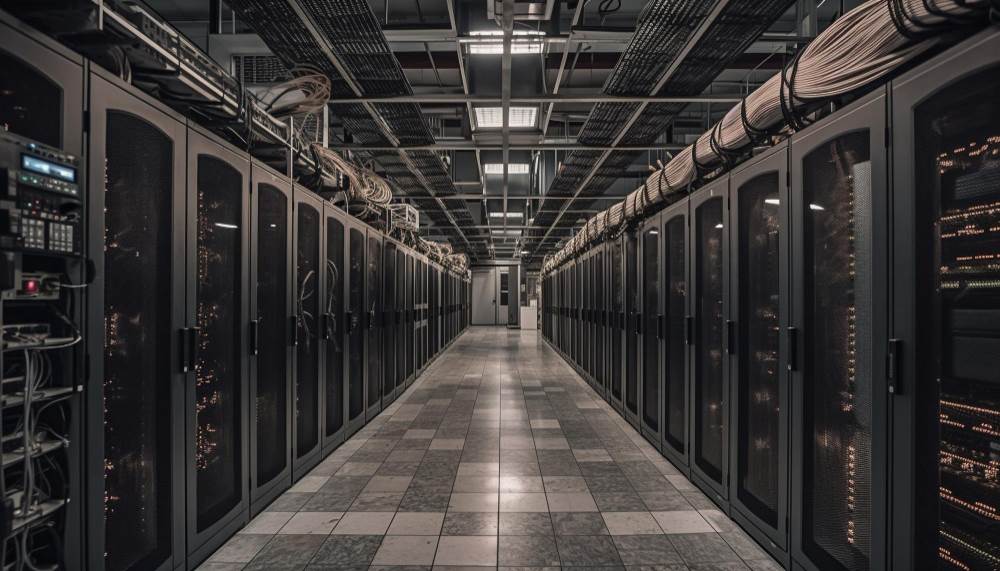Data centers are undergoing a significant transformation, driven by emerging technologies and evolving customer needs. Key developments revolutionizing the way data centers operate and deliver services are a product of the technology boom and changing corporate objectives. We are currently in an exciting era where innovation and agility are shaping the future of data centers.
The DC market has experienced impressive growth, expanding from 100MW to 1GW in the past 7 years. It is projected to reach 10GW in less than the next 10 years. This growth indicates that today’s data, measured in terabytes, has moved from small on-site server rooms to massive data centers.
Globally, the data center market is expected to grow rapidly, driven by the booming cloud business, efforts to digitize companies, and the increased use of data-intensive technologies such as IoT, AI, and edge computing.
Before we explore the new trends, it’s essential to grasp the fundamental role of data centers. These centralized hubs, equipped with cutting-edge networking, storage, and computing systems, play a vital role in processing, storing, and managing vast amounts of digital data. This understanding forms the bedrock for comprehending the new trends in data centers.
5 trends Are Shaping the Data Center in 2024
Liquid Cooling
While air cooling remains the norm, the potential of liquid cooling technologies, particularly for high-density installations, is on the rise. In high-density settings, liquid cooling offers a more cost-effective solution than air cooling, and we’re at the cusp of a trial period for user-friendly solutions, changing deployment methods, and improved manufacturer support that is expected to be widely adopted in the future.
- Persistence Market Research anticipates that the global market for liquid cooling systems in data centers will surge to $31.07 billion by 2032. This projection underscores the industry’s acknowledgment of the necessity for inventive cooling methods capable of managing the intense heat generated by densely packed server racks and high-density GPU clusters.
New Application Architecture
The need for sophisticated infrastructure solutions is rising due to the widespread use of microservices and cloud-native applications. New application architectures that adapt to the ever-changing requirements of contemporary application development are expected to become the main focus in 2024. Serverless computing is one of these architectural innovations that is getting a lot of attention because of its scalability and operational efficiency.
- This paradigm change is further aided by containers, improving app deployment consistency across various environments. With the inclusion of Kubernetes, a platform for container orchestration, the deployment and maintenance of containerized infrastructure are becoming easier. This minimizes disputes while simultaneously enhancing portability.
Artificial Intelligence
By 2024, AI will be a major topic of discussion as it becomes more integrated into data centers, enabling enhanced security, proactive issue prediction, and optimized operations. Imagine cooling systems driven by AI that dynamically adjust to server loads in real time, guaranteeing peak performance and minimal energy use. Software with intelligence will constantly monitor network traffic, identify and isolate cyber threats in advance, and provide countermeasures before they become more serious.
- The AI market was already valued at $100 billion in 2021 but is predicted to reach almost $2 trillion by 2030 – a twentyfold increase.
- Every business has been impacted by AI in some manner, and the rising need for data centers is partly due to the growing popularity of generative AI and massive language models. Graphics processing units (GPUs), which need more resources than central processing units (CPUs), are used in high-performance computing. High-density colocation can be quite advantageous for GPUs and other AI-related components. Businesses should look for high-density colocation providers that provide more than typical data centers as they integrate AI.

Sustainability
The emphasis will be on sustainability approaches that minimize the environmental effects of data centers. Anticipate a rise in the use of renewable energy sources like wind and solar energy, along with cutting-edge cooling solutions that use as little water as possible. Data center operators will integrate their operations with environmentally sustainable practices by prioritizing energy savings through better server design and AI-powered optimization.
- Data processing and storage reliability are maintained while the environmental effect of a sustainable data center is minimized. Prioritizing energy efficiency, utilizing renewable energy sources, saving water, and cutting back on waste may all help achieve this.
Hybrid Cloud Deployment
In 2024, more businesses are expected to use multi-cloud and hybrid strategies. This hybrid method uses the public cloud’s agility and scalability while retaining the on-premises infrastructure’s security and control, enabling the best possible workload allocation according to particular requirements. Meeting contemporary enterprises’ changing needs results in better performance and cost-effectiveness.
It appears that 2024 will be a significant year for data centers. The data center environment is about to undergo revolutionary changes, from the rising tide of liquid cooling to the adoption of clever AI technologies, sustainability initiatives, and the strategic embrace of hybrid cloud deployments.




